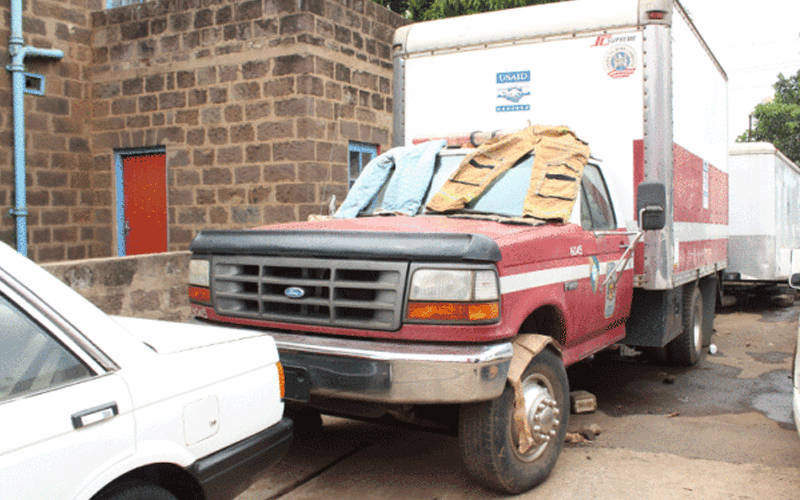Designing buildings that can withstand fire disasters

The risk of fires has become a growing concern among real estate players following increased number of high risk buildings and constant chocking of existing infrastructure that hinder .
Understanding how we can best improve our response strategies for private properties as well as public spaces is an urgent issue.
For instance, in the past decade, Gikomba market has had fire incidences every single year except 2011, 2013 and 2016.
It has burnt 10 times from 2010 with three of the incidences happening in June of 2015, 2018 and 2020.
There have also been fire incidences in slum areas such as in Nairobi’s Pipeline estate.
Such incidences remind us of the need to improve the response time and the firefighting capacity in our country.
In Kenya, fire is classified as a disaster and majorly regulated through reactive regulations.
In 2018, the University of Nairobi conducted a study that showed 86 per cent of buildings in Nairobi are non-compliant to fire preventive measures.
Some deficiencies noted include unclear or no exit signage, obstruction, locking among other safety measures.
“A number of buildings had poor escape routes, planning and lighting, and the number of people occupying buildings at one particular time exceeded the design factor.
You find doors blocked by chairs, or wares for sale while they are supposed to be open.
They also lack facilities for disabled people to evacuate from buildings in case of a fire,” notes Engineer Stephen Nyakondo, a senior researcher at National Construction Authority during a webinar to mark Fire Prevention Week early this week.
At the meeting organised by Architectural Association of Kenya (AAK) to brainstorm on firefighting challenges in the country, Eng Nyakondo said the condition of the fire exit doors were in bad state in many buildings as they were broken, locked or not self-locking. The buildings too lacked smoke control or removal mechanism.
Nyakondo believes that cultural as well as attitudinal perspectives on fire preventions are what make people less concerned about fire safety and prevention.
“Most people don’t see fire prevention and management as a key aspect when designing buildings.
They believe that fire only occurs in slum areas or are not prevalent in stone structures, which is not true.
Fires happen everywhere and everyone needs to take precaution in construction to include it,” he says.
Poor escape routes
There are laws governing how workplace buildings should be erected, under the Directorate of Occupational Safety and Health Services (DOSHS) in the Ministry of Labour and Social Protection.
It’s mandate is to ensure compliance with the provisions of the Occupational safety and health Act 2007 and promote safety and health of workers.
They also check on the code of practice on occupational safety and health auditing and approve architecture plans of buildings intended for work places.
“There is no specific provision on fire safety in the national occupational safety and health policy May 2012, except approval of fire safety training institutions and fire safety auditors.
Also, they have a provision that ensures workplaces have systems of fire detection and prevention.
The strategic measures include addressing inadequate personnel for supervision and control of workplace activities,” explains Dr Andrew Muruka, Deputy Director of occupation health and safety service at the Ministry of Labour and Social Protection.
No fire laws for residentials
The law states that there shall be one fire drill conducted within a period of 12 months and there must be emergency exits and sufficient numbers of fire extinguishers and a fire fighting team, which is dependent on the size of the particular work place,” Muruka explains.
They have 19 audit provisions, which include provision of detection of fire, spread of fire, the infrastructure needed to prevent fire and also emergency response and planning for fire.
While workplaces are covered by the law, there is a loophole when it comes to residential properties.
This year alone, the National Construction Authority, registered close to 56 per cent of registered construction projects, which are residential making it important that they too be regulated in the process.
“The only thing we need to look at is the definition of a workplace because there are new residentials coming up, which don’t fully comply with these regulations.
This is because people think that they are residential and don’t need such structures of a workplace.
There needs to be some structured way through which the residential are also governed,” observes Eng Nyakondo.
High cost of installation of fire components due to lack of local manufacturing is also another element that has made it not be constituted in buildings.
Nearly 80 per cent of fire equipment are imported making designers ignore it while building.
Also, since the fire and disaster management is handled by the local government, they rely on archaic fire management systems like water based extinguishers.
“Fore rated building materials are also expensive and not found locally. There is also a low level incorporation of ICT driven components in building designs and operations (smart buildings concept).
Construction is moving towards smart building concepts and currently there are few in the country that follows the route,” he notes.
In addition, lack of professionalism when it comes to who approves fire safety is lacking.
The fire department is staffed with engineers in other fields who are not necessarily trained in fire management.
Instead of using professional Fire Protection Engineers, the role is delegated to other forms of engineers, which is disastrous for building plans.
In most instances contractors are compelled due to insurance requirements rather than design.
“There needs to be people, specifically trained in fire engineering to provide the design services that the country requires.
Also there is no clear framework of fire prevention services in the counties. Some counties don’t have fire offices on the ground,” notes Eng Nyakondo.
Stakeholder engagement
According to Eng Nyakondo, the concept of fire engineering should be introduced in tertiary institutions.
In addition, there should be an Integrated Fire Managenet System (IFMS) that provides adequate feedback mechanism.
There should be regular review of the existing legal framework based on feedback.
“There is also need for harmonising the laws on fire safety through development of fire safety policy to implement the IFMS.
Do we have any lessons we have learnt from the fires that have happened in the country?”
There is also need to check if the country has any information available to the public so that people can learn from past fire incidence, as well as funding for research on fire management and prevention.
According to AAK president, Mugure Njendu, the organisation has been on the forefront in addressing the challenge in terms of stakeholder engagement and giving professional input and expertise in a revised building code.
A draft is already completed and it’s with the Attorney General’s office. They worked closely with NCA on the document and have provided a revision in terms of a robust and enhanced higher safety and regulations for buildings.












